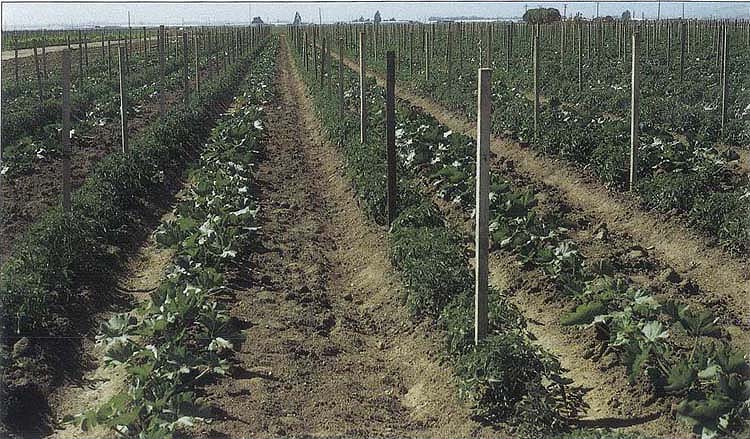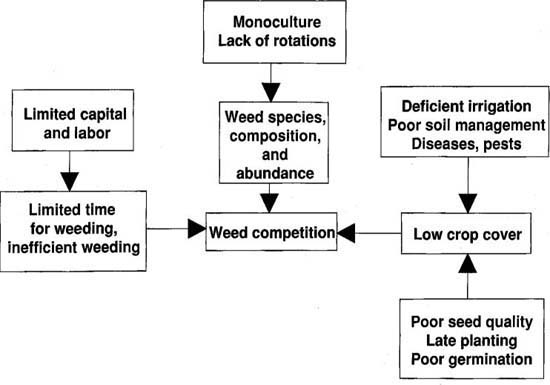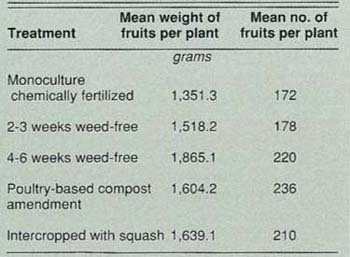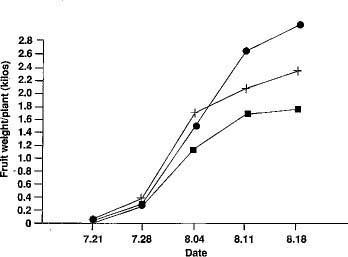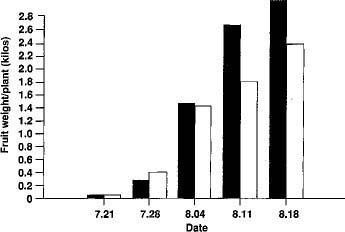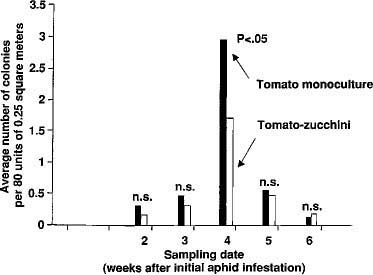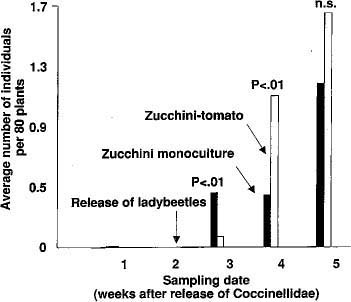All Issues
Low-input technology proves viable for limited-resource farmers in Salinas Valley
Publication Information
California Agriculture 45(2):20-23.
Published March 01, 1991
PDF | Citation | Permissions
Abstract
Low-input farming techniques offered energy-saving, cost-effective alternatives for resource-poor farmers of Mexican origin in the Salinas Valley. Most of these farmers currently manage small acreages using intensive vegetable cropping systems and high-input technologies.
Full text
Since its 1985 inception, the Rural Development Center (RDC) has been helping low-income farmworker families become economically self-sufficient farmers. Established by the Washington D.C.-based Association of Community Based Education (ACBE), the RDC leases each farmworker family 2 to 7 acres of land for a nominal fee, and provides technical and marketing assistance for 3 to 5 years. Most of the 25 families now participating utilize high-input technologies, copying the practices of large-scale commercial growers for whom they have previously worked. However, the conventional methods of large-scale growers, who produce $700 million of vegetables annually on 180,000 acres, are seldom appropriate to small-scalefarms. Conventional application of chemical pesticides and fertilizers, for instance, is not suited to operations with a reduced economic and resource base.
Given the above situation, the Division of Biological Control and Department of Soil Science at the University of California, Berkeley, engaged in a cooperative research, training, and demonstration project with the RDC aimed at assisting these small vegetable growers in developing and adopting low-input agricultural technologies and diversified cropping patterns. Initially, we described existing cropping systems and associated cultural techniques, as well as the biological and socioeconomic constraints affecting the systems.
Through on-farm diagnosis, we identified problems and designed possible solutions. For example, competition from weeds is a common problem. One cause is inefficient or late weeding, which may result from too little labor, time or capital. Applying herbicides would only add costs and hazards. We developed alternative solutions including crop rotation, intercropping, and weeding at critical competition periods (fig. 1).
During the surveys, we relied heavily on farmers' knowledge of each cropping system and its production potential. We learned that inputs were not being used efficiently, that land and labor could be used more intensely, that production costs could be lowered, and that agroecological techniques could be effectively substituted for agro-chemicals. We identified a number of limiting factors: space, pest problems, nutrient deficiencies, high energy use, and labor demand.
Fig. 1. A conceptual model for determining causes of production problems as exemplified by factors affecting crop-weed competition.
TABLE 1. Tomato yield under various cultural management systems in Salinas Valley, California (1988)
TABLE 2. Production, economic and energetic performance of tomato and zucchini grown in farmers' fields under organic and conventional soil management in Salinas
Based on this information we performed several field experiments at RDC during 1988-89. We tested modified practices designed to increase energy efficiency, improve the environment, and strengthen the economy of existing systems (table 1).
The overall goal was to evaluate proposed innovations within the context of farmers' goals, needs, and resource bases, and in terms of long-term energy savings and socioeconomic and ecological impacts. We hoped to facilitate the adoption of low-input technologies by farmers who otherwise might perceive them as too risky.
1988 Experiments
In a 2-acre area at RDC, we established several cherry tomato, zucchini-squash, and broccoli experimental plots. These included treatments (see table 1) that simulated the farmers' current management methods and comparative treatments that modified these methods. The latter included one or more low-input management components designed to overcome particular constraints and reduce energy use.
Plots were 10 meters square and each treatment was replicated three times. Steer manure was applied at pre-planting at a rate of 10 tons per acre. Weed control consisted of maintaining crops weed-free for 2 to 6 weeks after crop emergence, without further weed control after the specified period.
As shown in figure 2, yields of zucchini were similar in systems kept weed-free throughout the season and in systems kept weed-free for 4 to 6 weeks after crop emergence, during all but the last 2 weeks of harvest. Relaxing weed control after the 4-to-6 week period provided acceptable yields, with the additional benefit of releasing considerable time for farmers to devote to other tasks. Zucchini plants treated with manure amendment proved more productive than those receiving ammonium sulphate fertilizer applied at the recommended rate of 120 pounds per acre (fig. 3), especially during the last 3 weeks of harvest.
Cherry tomato yields were higher in plots receiving alternative treatments (weed-free periods and composting) than in the chemically fertilized and pesticide-treated monocultures (table 2). The tomato-zucchini polyculture offered a considerable yield advantage. It required 1.02 acres of tomato monoculture and 0.64 acres of zucchini monoculture to produce the same quantities of tomato and squash harvested from only a 1-acre polyculture. The land equivalent ratio (LER) for tomato and zucchini was 1.66, which indicates that the total yield of the polyculture per unit area was 66% greater than for the monoculture.
1989 Experiments
In the spring of 1989, the 2-acre experimental area was planted to plots consisting of cherry tomato monoculture, zucchini monoculture, and tomato-zucchini polyculture, each replicated three times. Poultry-based compost was added to all plots at a rate of 5 tons per acre. All plots were irrigated and tractor-cultivated as required. No chemical fertilizers or pesticides were used.
Data on crop yields, foliar and soil-dwelling pestiferous and beneficial arthropods and pathogens, fluctuations and changes in population levels of weed species, and soil chemical characteristics (soil organic matter content, pH and nutrient levels) were collected and analyzed. These data helped us compare the performance of the various systems and elucidate the ecological mechanisms that explain observed fluctuations and differences in yield, arthropod, weed, and soil parameters among all systems.
Again, the polyculture overyielded the monocultures as expressed by an LER of 1.48. This yield advantage of the polyculture was due to several factors. Apparently, competition between both crops was minimal as their root systems explored different levels of the soil profile; in fact, the combination of both crops seemed to enhance resource capture (water, nutrients). Moreover, the proximity of zucchini plants afforded a certain level of pest protection to tomatoes. During mid-season, tomato monocultures exhibited larger populations of the green peach aphid, Myzus persicae. than the corresponding polycultures (fig. 4).
Fig. 2. Yields of zuccini squash under different weeding regimes: (●) weed-free all season, (▪) 2-4 weeks weed-free after transplant, (+) 4-6 weeks weed-free after transplant.
Fig. 4. Abundance of green peach aphid (Myzus persicae) on zucchini plants grown in monoculture and in polycultures associated with cherry tomatoes.
Fig. 5. Pupal densities of lady-bird beetles (Hippodamia convergens) in zucchini monocultures and in polycultures associated with cherry tomatoes.
Although aphid attack was somewhat severe in most zucchini treatment plots, differences in aphid abundance were observed between cropping designs. A faster “crash” in aphid populations was observed in the polycultures, apparently due to the effective mortality imposed by the lady beetles, Hippodamia convergens, whose pupal densities were greater in the polycultures than in monocultures (fig. 5).
Weed suppression through competition or “niche preemption” was very marked in the polycultures, where average weed bio-mass reached by mid-season was only 8.4 grams per square meter, compared to 248 grams and 88 grams in the tomato and squash monoculture, respectively.
The soil at the RDC is a coarse-textured Hartford gravelly sandy loam and is moderately productive with a Soil Conservation Service soil capability rating of IIs-4 and a Storie Index rating of 60. The productivity of coarse-textured soils increases markedly with increased organic matter, which, in turn, improves tilth and increases nutrients and water-holding capacity. This may lower water and energy requirements for production.
The top soil amended with poultry-based compost, sampled in the spring of 1989, contained 43% more organic carbon, 40% more nitrogen, 8% more exchangeable calcium, 68% more exchangeable potassium, 10% less exchangeable magnesium, and 31 % less exchangeable sodium than non-amended topsoil. After the crops were harvested in the fall, the compost amended topsoil was still 16 % higher in organic carbon and 10% higher in nitrogen.
Experiments in farmers' fields
Three cooperating farmers each devoted 10 rows of one field to test the application of poultry-based compost (10 tons per acre) on the yields of tomato and zucchini. The rest of the field was managed conventionally using commercial fertilizers and pesticides at various rates (see table 2). Assessments were made of energy efficiency, economic performance, labor requirements and crop productivity. Results showed compost-induced yields to be fairly comparable to that of chemical fertilizers (table 2). Two farmers obtained higher zucchini yields with chemical fertilizers, but they used considerably higher fertilizer dosages than recommended. These larger yields contributed to larger profits and a larger rate of returns. Differences in energy efficiency varied between systems and were not significantly different between organic and conventional plots managed by the same farmers. All organic zucchini systems showed 5% to 10% lower labor productivity due to increased labor inputs associated with compost hauling and spreading.
We expect that with time, as farmers who are converting to organic production are well into the transitional period, yields under organic management will increase, ensuring savings in economic and energy costs. With greater availability of organic fertilizers, chemical fertilizers could be replaced by compost at approximately the same purchase cost for the farmer, with the additional advantages of improved soil structure and better water retention, and possible reductions in nutrient leaching or run-off. These long-term advantages are now being monitored for the second year, and will be subjected to economic evaluation that takes into consideration ecological costs.
Conclusions
Our project demonstrates that it is possible to grow vegetables with low-input, energy-conserving technologies in an area where vegetable production traditionally involves high inputs. This can have long-term ecological, socioeconomic, and public health ramifications, but such benefits will become more apparent as the conversion process from high-input to low-input agriculture continues.
As the effects of biological pest control and organic amendments become more evident, we expect that farmers adopting the new systems will be able to reduce energy use, cut costs of production and secure diversity of production for subsistence and marketing. In fact, we expect that the maximum yields sustained by organic methods could be much higher than those now realized. Indirect benefits may include reduced soil erosion, reduced chemical pollution, better water conservation, and increased soil biological activity.
As our collaborating small farmers link to specialty and natural food markets with products either certified as organic or perceived as chemical-free, they will enhance their ability to obtain premium prices for their produce, considerably increasing income.
This project demonstrates the benefits of researchers and farmers working side-by-side to design and conduct formal trials of innovative practices, such as low-input and energy-saving systems and technologies. In this way, farmers use their own criteria for evaluating the potential benefits or risks of the proposed systems.
We hope our experience provides a model for on-farm research and extension to be used in areas with similar agroclimatic and socioeconomic conditions, benefiting other resource-poor farm workers and farmers who have the talent and ambition to be productive and successful producers.



